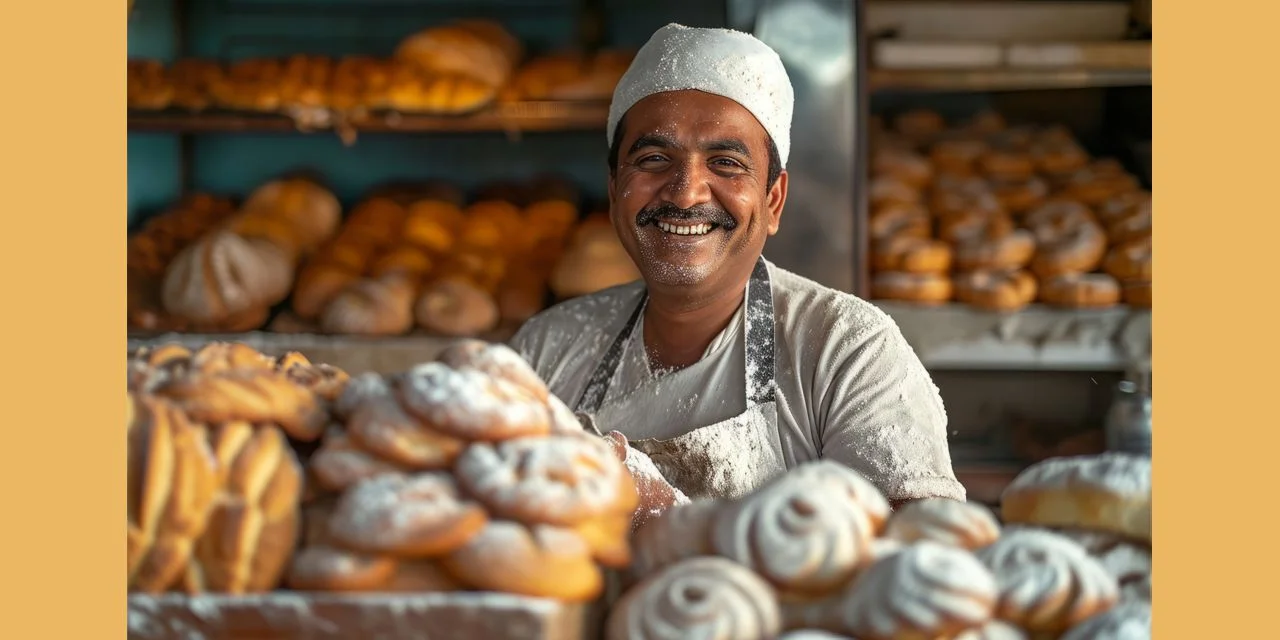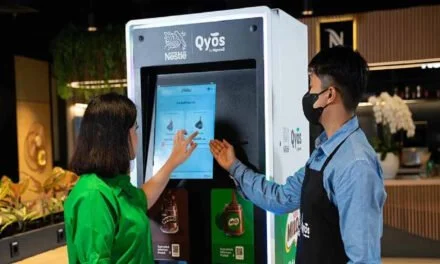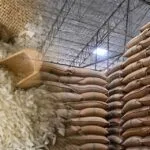The bakery and confectionery industry in India is estimated to be around USD 9 billion, reflecting steady growth. Saleem A. Taqvi delves into the current status, challenges, and future prospects of India’s bakery and confectionery industry.
India’s bakery and confectionery industry has experienced significant growth over the past decade, emerging as a vital segment of the country’s food processing sector. This dynamic industry, driven by increasing urbanization, rising disposable incomes, and a growing preference for convenience foods, offers a wide range of products that cater to diverse consumer tastes. The sector continues to evolve and expand from traditional bread and biscuits to specialty cakes and premium chocolates. Despite facing challenges such as fluctuating raw material prices and stringent food safety regulations, the industry presents numerous growth opportunities and is witnessing emerging trends that are reshaping the market landscape. This article delves into the current statas, challenges, and future prospects of India’s bakery and confectionery industry.
Table of Contents
India’s Bakery and Confectionery Industry
The bakery and confectionery industry in India is a significant segment of the food processing sector, contributing substantially to the nation’s economy. The Indian bakery market size reached approximately USD 11.07 billion in 2023. It is projected to grow at a CAGR of 9.5% between 2024 and 2032, reaching a value of around USD 25.16 billion by 2032. For more on India’s growing food sector, explore recent trends in food processing industry in India.
Bread and biscuits dominate the market, with biscuitss being a staple in most Indian households. The bread segment includes a variety of products such as white bread, whole wheat bread, multigrain bread, and specialty breads like sourdough and rye. The biscuit category is equally diverse, featuring glucose biscuits, cream-filled biscuits, cookies, and health-oriented variants like digestive and high-fiber biscuits. Learn more about how to optimize bakery and confectionery packaging to cater to changing market demands.
The demand for cakes and pastries has surged, particularly in urban areas. This segment includes a wide range of products, from simple sponge cakes to elaborate designer cakes for special occasions. Pastries, including croissants, Danish pastries, and tarts, are also gaining popularity, driven by teh influence of Western culinary trends. For tips on starting in the bakery business, check out how to start a successful bakery business in India.
The confectionery segment encompasses a variety of products, including chocolates, candies, toffees, and gums. Chocolates, in particular, have seen a significant rise in demand, driven by increasing consumer indulgence and the gifting culture during festivals and special occasions. This segment is characterized by a mix of mass-market products and premium offerings, catering to different consumer segments. To understand more about the trends shaping the confectionery industry, read recent trends in the confectionery industry.
Diverse Product Range and Consumer Demand
The Indian bakery and confectionery market is marked by significant regional variations. Each region has its own unique bakery products that cater to local tastes and preferences. For instance, the South Indian market has a high demand for bakery items like rusks and savory biscuits, while the North Indian market prefers sweeter confections. This regional diversity presents both challenges and opportunities for manufacturers to innovate and cater to localized tastes. Read more about India’s bakery and confectionery industry and its challenges.
The industry is divided into organized and unorganized sectors. The organized sector comprises large multinational corporations and established Indian brands that operate with modern manufacturing facilities and adhere to strict quality standards. The unorganized sector, on teh other hand, includes numerous small-scale bakeries and confectioneries that operate at a local level. While the organized sector is growing rapidly, the unorganized sector still holds a significant market share, particularly in rural and semi-urban areas.
Emerging Growth Opportunities
The bakery and confectionery industry in India presents numerous growth opportunities. The increasing penetration of organized retail and the expansion of e-commerce platforms have made these products more accessible to a broader consumer base. Innovation in product offerings, such as the introduction of health-focused bakery items and premium confectionery products, caters to the evolving preferences of health-conscious and affluent consumers. The rise of the middle class and the demographic shift towards a younger population also contribute to the expanding market, creating a fertile ground for new product launches and market expansion. For more, explore the top 20 Indian food and beverage companies in 2025.
India’s bakery and confectionery products also have substantial export potential. Indian sweets and snacks have found a growing market among the Indian diaspora and other international consumers who appreciate the unique flavors and quality of these products. The export market is an area of immense opportunity, provided manufacturers can meet international quality standards and packaging requirements. Learn more about global expansion of Indian food products.
Industry Challenges and Obstacles
Despite the promising growth trajectory, the industry faces several challenges. One of the primary issues is the volatility in raw material prices, particularly for key ingredients like wheat, sugar, and cocoa, which affects production costs and profitability. The fragmented nature of the industry, with numerous small-scale producers, leads to consistency in quality and standards. Additionally, stringent food safety regulations and compliance requirements pose significant hurdles for manufacturers, especially smaller players who may need more resources and infrastructure. The industrry also grapples with logistical challenges related to distribution and supply chain management, which can impact product freshness and shelf life. To address these challenges, explore how India’s food industry can optimize distribution and reduce operational costs.
Current and Emerging Trends
1. Rising Demand for Healthy Alternatives
Consumers are becoming increasingly health-conscious, driving the demand for healthier bakery products. This trend has led to a rise in the popularity of multi-grain, whole wheat, and low trans-fat options. Bakeries are responding by incorporating nutrient-rich ingredients such as oats, flaxseds, chia seeds, and quinoa into their products. These healthier alternatives not only cater to health-conscious consumers’ dietary preferences but also help attract a broader customer base looking for guilt-free indulgence.
2. Impact of Western Culinary Influences
Western food trends are becoming more prominent in the Indian bakery sector. Consumers are now more exposed to global cuisine through travel, media, and social platforms. This exposure has resulted in an increased demand for international flavors, techniques, and presentation styles. Indian bakeries are adapting by offering various products such as croissants, bagels, baguettes, and gourmet desserts that reflect Western culinary trends. Additionally, fusion products that blend Western and Indian flavors are also gaining popularity.
3. Expanding Product Diversification
Bakeries are diversifying their product portfolios to stay competitive and meet evolving consumer demands. Beyond traditional items like bread and biscuits, there is a growing emphasis on specialty cakes, artisanal bread, and unique pastries. These products cater to niche markets and offer higher profit margins. Artisanal bread, for instance, is appreciated for its craftsmenship and quality, while specialty cakes with intricate designs and premium ingredients are in high demand for celebrations and special occasions.
4. Trends in Healthier Snacking Options
The trend towards healthier snacking is gaining momentum. Consumers are seeking snack options that are not only tasty but also nutritious. In response, bakeries are innovating by creating healthy snack bars, energy bites, and protein-packed treats. These products often feature ingredients such as nuts, seeds, dried fruits, and superfoods, providing a balance of taste and health benefits. This trend aligns with the broader shift towards mindful eating and the preference for snacks that support a healthy lifestyle.
5. Trends in Innovative and Sustainable Packaging
Packaging plays a crucial role in product appeal and consumer perception. There is a growing emphasis on eye-catching and sustainable packaging solutions. Eco-friendly materials such as biodegradable plastics, recycled paper, and compostable packaging are becoming more popular as consumers and businesses alike prioritize environmental sustainability. Additionally, creative packaging designs that enhance the unboxing experience and provide convenience are helping bakeries differentiate their products in a competitive market.
6. Increasing Demand for Product Customization
Personalized products are increasingly in demand, particularly for special occasions such as birthdays, weddings, and corporate events. Bakeries are offering customization options for cakes and pastries, allowing customers to choose from a variety of designs, flavors, and decorations. This trend not only enhances customer satisfaction but also allows bakeries to charge a premium for bespoke creations. Offering personalized and unique products can significantly boost a bakery’s reputation and customer loyalty.
7. The Rise of Café Culture in India
The café culture is rapidly gaining traction in India, with bakery cafés becoming popular hangout spots. These establishments offer a cozy ambiance where customers can enjoy freshly baked goods along with beverages like coffee and tea. Chains such as Barista, Café Coffee Day, and Monginis are at the forefront of promoting bakery items in a café setting. This trend not only increases the consumption of bakery products but also provides bakeries with an additional revenue stream by creating a social dining experience.
Conclusion
The bakery and confectionery industry in India is poised for continued growth, supported by a dynamic market and evolving consumer preferences. While the industry faces several challenges, the opportunities for innovation and expansion are abundant. By addressing these challenges and leveraging emerging trends, the sector can achieve sustainable growth and continue to delight consumers with a diverse array of high-quality products.
References
- India Bakery Market Size, Share and Industry Growth. <https://www.expertmarketresearch.com/reports/indian-bakery-market>
- India Bakery Market (2024-2030) | Trends, Outlook & Forecast. <https://www.6wresearch.com/industry-report/india-bakery-market>
- Challenges Facing India’s Bakery Industry – Magzter. <https://www.magzter.com/stories/Business/Bakery-Review/Challenges-Facing-Indias-Bakery-Industry>
‘Processed Food Industry’: The Voice of Food Processing Industry
Processed Food Industry (PFI) is a premier English-language monthly B2B publication (ISSN 09721649) headquartered in New Delhi, catering to the vibrant and ever-evolving food processing industry. While we don’t claim to be the largest or most widely read, our proud legacy of over 27 years—publishing continuously since 1997—has earned us the trust of industry professionals as a reliable source of insights and information.
If your goal is to tap into the booming Indian and South Asian markets to promote your equipment, technology, software, or consumables, PFI is your strategic partner. With our hybrid approach across print, web, and social media, we help you establish strong brand recognition rooted in market relevance. Backed by a team of top-tier technical writers, we’re ready to work closely with you and your customers to craft compelling content that drives results.
India and South Asia’s food industry is expanding rapidly, driven by efficiency and cutting-edge innovations. Don’t miss the opportunity to elevate your brand and engage with this dynamic market. Get our 2025 media kit to fine-tune your marketing strategy, increase your visibility, and convert potential customers into valuable conversations. Additionally, ask for a sample copy of our monthly magazine and experience the quality and relevance we deliver.
Let us help you define your role in the future of the food processing industry.

Have a news or topic to share with industry? Write to us editorial@pfionline.com
















